China’s recent announcement that it had sent an unmanned vehicle round the dark side of the moon on January 3 was impressive. The satellite, Chang’e-4, was the fourth in a series but the first to have been landed and kept there for a few days. It was an achievement formally announced on January 11 and represented an astounding new step into space exploration by Beijing. In fact, this new scientific venture appears to be part of a modern expansion of world influence that has especially intensified over the last three decades at least. Pity that only 80 photographs were distributed by China – strange that they did not offer more as evidence of this exploration in what must be imagined as a fresh breakthrough – but that is clearly a political decision.
Space ventures ain’t what they used to be!!
This may not be yet another start of an expensive space race. However, there is a variety of commentators who have resorted to the idea that our world is bulging on all sides, even top and bottom, and will soon need parking lots and new developments in outer space. Sounds a bit over the top, but there is growing evidence and research is growing, perhaps from the poverty on the Earth’s surface, which was one of the stories as to the need for changes in the previous competition series. But this is just a guess, not a forecast.
The news from Beijing rushed me back to Wikipedia for a quick-ish read on the last half-century (there is obviously too much). The reminders are clear on who were the main players, obviously the Soviet Union, as it then was, and the United States. China was not to be seen in the space game then, although the reports on the rocketry of Mao Testung (1893-1976) came through loud and clear in Cold War propaganda.
Scoring high came the then-Soviet Union with the announcement of the first landing on the moon of Lunik 2 on September 13, 1959. And of course before that was the dog, Laika, who went up aboard Sputnik 2. But far more important in Russian folklore and remembrance still today is the flight of the first man in Space, the smiley Yuri Gagarin, aged 27, at the time of his orbit flight in April 1961. And next, of course came Apollo 11 that took Neil Armstrong and Buzz Aldrin to land on the moon on July 20, in 1969. Why go back to this, now? Well, because China has joined the space sports tournament with this venture which included taking plant samples – that did not last long – to the moon. And reports are out there suggesting that US space facilities could observe the Chinese landing through off-surface angled and indirect photography and hence the Americans confirmed that the experiment was working well. Mention of the above four dates in the old space calendar does not purposely exclude all the other important events – there were too many to list here and the Google trick surely shows a full chronology.
And now China is preparing the next step, Chang’e-5, which aims to bring back a variety of soil samples to study the evolution of temperatures and climate changes, compared with the material already found over the six decades of exploration on the bright side of the moon. Presumably the research will offer up some of the resources sought to install human life on the moon in a forthcoming stage. What is to happen down here with the extent and spread of poverty, among other situations of hardship and difficulty is not easy to imagine, although some attention might be advisable.
It does seem strange – or perhaps it should not be in the sense of a forecast of significance – to call the scientific venture a “change” when put into English, but the Chinese have chosen to go back to the names of their ancestors. The legend used to name the series of Chinese missions to the Moon is strongly rooted in local calendars and celebrations. The best of the stories appears to be the one on which the mid-Autumn Moon Festival is based. According to history, the story begins in a very distant past which could be 5,000 or 10,000 years before. (Side-script comment on the distant past concept: A few months before the dramatic changes that followed in the Tiananmen Square protests of June 1989, while working in Beijing in 1988, I asked my assistant, Liu Daiming – who had translated some of Agatha Christie into Chinese – for some precise date. Her reply: “Oh, Andrew, there is too much history in China.”)
What happened was that ten sons of the Jade Emperor had changed into suns and had risen into the skies. Throwing so much light on earth, all lands were scorched, thus causing drought and hardship for the people. An archer, Houyi, husband of Chang’e, destroyed nine of the ten, leaving just one sun. As a reward he, the archer, was given the drops of immortality. He did not drink the beverage immediately, but let his partner or celestial queen, Chang’e, hold them in her custody as he did not want immortality without his wife. Then, while Houyi went out hunting, his apprentice, Fengmeng, broke into his master’s house and tried to get Chang’e to part with the magic drops. She refused and to keep him from drinking the drops, she drank them. Chang’e then flew upward and settled on the Moon as her home and throne, from where she could love her husband. Houyi returned home to find out what had happened and in his sadness he presented her with fruits and sweets (the fruits and sweets of Autumn) that his woman enjoyed.
Chang’e appears strongly in an ancient novel, Journey to the West, by Wu Cheng’en (1505-1580), issued during the Ming Dynasty and often reprinted as it is considered one of the four great classical novels of China. The book also keeps the subject of Chang’e strongly in force.
There, I enjoyed telling you this story – even while worried about what is going to happen on the moon.

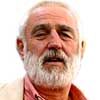







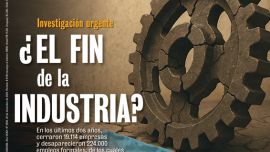









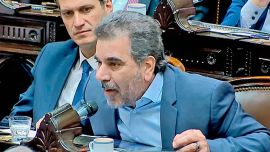
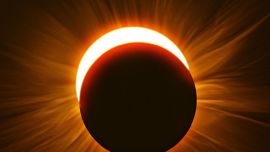
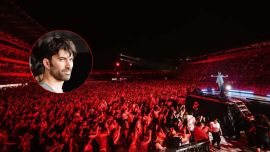

Comments